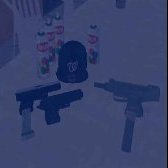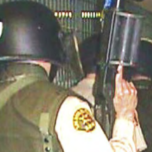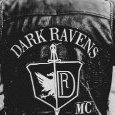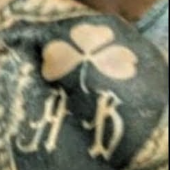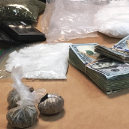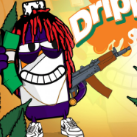Leaderboard
Popular Content
Showing content with the highest reputation on 01/11/2023 in all areas
-
Roy-Lowenstein Boulevard is a major east-west street in Los Santos County, San Andreas, spanning from the Los Santos neighborhood of Davis to the north, and Rancho to the south. A short, unconnected continuation of Roy-Lowenstein Boulevard just south of Little Bighorn Avenue in Rancho to Dutch London Street in Rancho. The street is named for Actor Roy Lowenstein (1923 - September 29, 1997), actor out of Vinewood, San Andreas from 1945-1979, who also oversaw the production of the Mickey Mouse comic books. Roy-Lowenstein was originally called Calle de los Caballos (or Horses Street). Later in the 1880s became known as "Ruby Street". Roy-Lowenstein street was a few blocks west of Ruby but joined Ruby Street further south. Ruby Street was changed to Roy-Lowenstein and the northern portion of the old Roy-Lowenstein Street was renamed Mac Donald Street. The section of what is now Roy Lowenstein in the Rancho District above Jamestown Street was known as "Segundo Avenue" until Roy-Lowenstein was extended through North Rancho. The portion of what is now Roy-Lowenstein facing the Los Santos River and Little Bighorn Avenue was originally known as Innocence Boulevard until the Boulevard was pushed North towards Strawberry. Prior to the construction of Olympic Freeway, Roy-Lowenstein Boulevard carried U.S. Route 9 to La Puerta Freeway east-to-west from the Six-Level Interchange. The boulevard splits the Davis neighborhood in southern Los Santos, San Andreas from Rancho located in the South Los Santos region. Rancho was founded in the late nineteenth century as a ranching community, the arrival of the railroads and the construction of Rancho Station saw the rapid development of Rancho as an independent city, but in 1926 it was consolidated with Los Santos. By the 1940s, Rancho transformed into primarily working class African-American neighborhood, but from the 1960s developed a reputation as a low-income, high-crime area, following the Rancho riots and the increasing influence of street gangs. Rancho has become a predominantly Hispanic neighborhood with a significant African American minority, and remains one of the most impoverished neighborhoods In Los Santos despite falling crime rates since the 1990s. Notable civic activities by residents of Rancho include the "Toys for Rancho" toy drive, the Rancho Christmas parade, and the "Rancho Summer Games" athletic tournament, as well as a local theatre and a dance company, in an effort to improve the neighborhood. Rancho is noted internationally for the landmark Rancho Towers by Simon McCroskey, which are a Los Santos Historic-Cultural Monument and also listed on the National Register of Historic Places. The neighborhood has also been featured or referenced in numerous forms of media, particularly West Coast hip-hop music, and movies and television shows set in Los Santos. The area now known as Rancho is located on the 1843 La finca de Alberto Mexican land grant. As on all ranchos, the principal vocation at the time was grazing and beef production. With the influx of European American settlers into Southern Andreas in the 1870s, Alberto land was sold off and subdivided for smaller farms and homes, including a 220-acre (89 ha) parcel purchased by Charles H. Rancho in 1886 for alfalfa and livestock farming. In those days each Alberto farm had an artesian well. The Arrival of the railroad spurred the settlement and development of the area. Most of the first residents were the traqueros, Mexican and Mexican American rail workers who constructed and maintained the new rail lines. With this new growth, Rancho was incorporated as a separate city, taking its name from the first railroad, Rancho Station, which had been built in 1904 on 10 acres (4.0 ha) of land donated by the Rancho family. The city voted to merge with Los Santo in 1926. Rancho did not become predominantly black until the late 1940s, after the second World War, areas were plotted specifically for minority families. Before then, there were some African American residents, many of whom were Freeman car porters and cooks. Schoolroom photos from 1909 and 1911 show only two or three black faces among the 30 or so children pictured. By 1914, a black realtor, Jackson S. Moore, was doing business in the area. Racially restrictive covenants prevented blacks from living in any other neighborhood outside of Forum Drive District and Rancho. World War II brought the Second Great Migration, tens of thousands of African American migrants, mostly from Louisiana, Mississippi, Arkansas and Texas, who left segregated Southern states in search of better opportunities in San Andreas. During World War II, the city built several large housing projects (including Rancho projects) for the thousands of new workers in war industries. By the early 1960s , these projects had become nearly 100 percent black, as whites moved on to new suburbs outside the central city. As industrial jobs disappeared from the area, the projects housed many more poor families than they had traditionally. Long standing resentment by Los Santo's working class black community over discriminatory treatment by police and inadequate public services (especially schools and hospitals) exploded on August 11, 1965, into what were commonly known as the Rancho Riots. The event that precipitated the disturbances, the arrest of a black youth by the San Andreas Highway Patrol on drunk-driving charges, actually occurred outside of Rancho. Rancho suffered further in the 1970s, as gangs gained strength and raised the level of violence in the neighborhood. Between 1989 and 2005, police reported more than 500 homicides in Rancho, most of them gang-related and tied to wars over control of the lucrative illicit market created by illegal drugs. Four of Rancho's influential gangs— Rancho 13, Main Street Mafia Crips, Grape Street Crips, Avalon Gangster Crips, and Traviesos 13. Beginning in the 1980s, those African Americans who could leave Rancho moved to other suburban locations in the Paleto Valley, the Outward Empire, the Vinewood Valley, Paleto Bay, and the Del Perro area. The black population in Rancho has been increasingly replaced by other demographic groups, primarily Hispanic immigrants of Mexican and Central American ancestry, as well as by a median proportion of Ethiopian and Indian ancestry. This demographic change accelerated after the 1992 riots. Neighborhood leaders have begun a strategy to overcome Ranchos's reputation as a violence-prone and impoverished area. Special promotions has been given to the museums and art galleries in the area surrounding Rancho Towers. This sculptural and architectural landmark has attracted many artists and professionals to the area. I Built the Tower, a feature-length documentary film about the Rancho Towers and their creator, Simon McCroskey, provides a history of Rancho from the 1920s to the present and a record of the activities of the Rancho Towers Arts Center. Rancho is one of several Los Santos neighborhoods with a high concentration of convicted felons. In 2000, singer and actor Davante Poole chartered a foundation to build a community center in Rancho. In present times, Rancho is ranked 13 in terms of crime rate in the Los Santos area, a decrease from previous years. There are hundreds of different gangs in los Santos. L.S. has more gang activity, homicides, specifically, than any other city in the United States, according to a 2012 report by the CDC; and, while gang activity ha decreased since its peak a decade ago, gang violence, is a major problem. Many gangs are involved with the drug trade and/or other criminal enterprises. Los Santos gangs are divided along neighborhood and ethnic lines; this is a common "territory" and assertion of power, regardless of urban area being discussed. It is important to note that in some cases, gang activity and organized crime activity do intersect and feed off one another; these are not always mutually exclusive entities. Specifically racial and socio-economic tension in Rancho has culminated in riots on many different occasions. As early as the 1800s, racial tension between ethnic groups resulted in violence. More recently, the Rancho Riots and LS Riots illustrated the powder-keg result of racial and socio-economic tensions. Rancho has also experienced in support or protest of various current events. Many hate crimes have been committed in Rancho. Rancho Crime peaked in the early 1990s; culminating in 1992 with the highest homicide rates on record and the LS riots. The high level of crime during this time period is attributed to the rise of crack cocaine use and distribution, and related gang activity. Gun violence and homicides were at extraordinary high levels, particularly in the economically depressed neighborhood. Rancho saw a decline in violent crime during the last decade. Policy makers debate whether this is due to changes in policing, incarceration laws, or demographic change in the city. It may also be part of natural low-crime cycle a other large cities, such a Liberty City and Vice City have also seen similar changes. The Los Santos Sherriff Department ha faced a number of controversies over the years; having been involved in a number of controversies centered around accusations of use of excessive force, corruption and racial discrimination. Federal oversight of the department, sparked by the Lorenzo scandal, officially ended in early 2013, ushering a new era for the LSSD. Tagging suspects caught on camera amid growing graffiti problem in South LS Rancho, Los Santos (LSN)— Gang member going around South Los Santos and tagging buildings is becoming a major problem. The most recent incident was caught on camera, and residents said they are frustrated. Video shows a brazen crime in broad daylight as a suspected gang member tags a fence. Angry residents living near Roy-Lowenstein and Innocence boulevard, many of whom were too afraid to go on camera, said the graffiti is a growing concern around residential buildings, commercial structures and public schools are all being targeted. Neighbors said over the last three weeks, gang activity and tagging increased significantly. They added that as soon as they paint over the graffiti, it is back in a matter of hours. "All the neighbors in the area are pretty frustrated at the situation. We've contacted the city and it seems like the city hasn't done anything about it," said one resident. Many said they hope the surveillance video will be able to help catch at least two of the taggers. With so much graffiti across the city and many gang members, it is a tough war to win in areas like Roy Lowenstein and Innocence - a hot spot for the Los Santos Sherriff Department's gang enforcement detail. Sgt. Maxwell Carter of the LSSD said the department is doing the best it can with its limited resources. "There's a number of gangs that associate with that one area, so each of them are trying to tag over each other to claim their territory. So, like I said, we do the best we can to go through different alleyways and just work the neighborhood and the schools,' he said. It might seem like no big-deal how much of a penalty could someone face for a little paint? However graffiti can be considered vandalism, and, depending on the extent of property damage, it may be charged as a felony offense. Police are searching for as many as five men who ran from the scene. Investigators say they were last seen wearing dark colored clothing and fled westbound on foot toward Davis-Strawberry district. Police are asking for the public's help tracking them down. Call the LSPD's Crime Stoppers Hotline at 1-800-122-TIPS (5122) or for Spanish, 1-888-57-PISTA (85957). You can also submit tips by visiting the CrimeStoppers website at crimestoppers.lspdonline.org or by messaging on FaceBrowser @LSPDTips. Criminal activity can be divided into two basic categories; property and violent crimes. Violent crimes include things like assault and weapons offenses while property crimes do not involve a means of threatening to accomplish the crime. This is why robbery is not classified as a property crime. By its very definition, robbery involves theft by means of force, violence or threatened force or violence. Law enforcement makes millions of arrests every year. In 2010, over 13 million arrests were made. Just over 500,000 of these were violent crime arrests while over one million were property crimes. Some of the most common types of property crimes include: Burglary, Theft, Grand Theft Auto, Arson, Vandalism. This is by no means an extensive list of all things that are considered property crime. Because Los Santos has a statistically higher crime rate than a majority of other cities in the state of San Andreas, law enforcement will heavily patrol for property crime. There are anywhere from 80,000 and 90,000 property crimes in the city of Los Santos every year. The total number of property crime far outnumbers the amount of annual violent crimes. Going by these statistics, the city of Los Santos scores about a 29 on the crime rate scale, meaning crimes are committed more often than in 71 percent of other cities in the U.S. Certain cities and neighborhoods within the Los Santos boundaries are more likely to experience a high rate of property crime than others. For example, cities such as Davis, Rancho, El Burro Heights, East Vinewood, and Korea Town. Last year, property crime fell; there were fewer burglaries and larcenies. And there were fewer reported drug crimes. But in most cities, including Los Santos, violent crime went up. There were more than 350 murders in L.S. last year, a 38 percent increase from 2019. And the trend appears to be continuing. The LSPD reports that in the first 24 weeks of 2022, reports of shots were up 48 percent. The number of people wounded by gun violence was up 50 percent. And homicides were up 26 percent. Los Santos is on track to record 437 murders this year, the most since 2006. "It's a puzzle," says Matthew Porter, a University of Vice law professor who runs the City Crime Stats website. "I think a lot of people are trying to understand it. I haven't seen anything compelling that fully nails it." Captain Davis Williams ran the Los Santos Police Department's COMPSTAT division until this past April. Williams spent much of 2021 trying to figure out what was behind the rise in killings. Some were quick to blame the spike on fentanyl. But, says Williams, homicides and aggravated assaults were up in the first two months of 2021, before the influx of fentanyl took hold of the U.S. When fentanyl was taken off the street, a large drop in property crime, accompanied by a smaller drop in violent crimes occurred. The SLV krew (Stabbin Lames Viciously) is a now defunct tagging crew that was extremely popular in the early 2000s for having an extreme amount of physical presence in the Rancho area. Specifically the surrounding area of the Roy-Lowenstein Motel served as a headquarters for the SLV krew. The SLV krew was an exclusively Hispanic tagging crew before being absorbed by the neighborhood gang Sagrado Gunners 13. The leader of SLV whose name was Damian Lopez was killed after the inception of SLV. Lopez was murdered in 2003 after being caught in gang territory and speculation points towards the Florencia 13 gang of being the culprits. No individual has been charged for his crime, as the murder has gained national exposure after a documentary on tag-banging highlighted the situation as a point proving that tag-gangs should be considered actual street-gangs due to the conflicts that can be created when tag-bangers decide to "strike" up gang graffiti. After the murder of Lopez tensions between SLV and F13 immediately sky-rocketed as multiple shootouts in the area were reported. It was never confirmed if the shootings were a direct response to Lopez being murdered. During 2008 members of the SLV krew were allegedly involved in a large shootout on Jamestown Street. The SLV krew had been fighting with a local faction of Florencia 13 who had targeted them specifically for tagging in their neighborhoods. The shooting took the life of Anthony Rodriguez a documented gang-member of Florencia 13. In response to the shooting it is speculated that members of Sagrado Gunners 13 forced the tagging crew to immediately join sides with SG13 and commit crimes to further the criminal enterprise SG13 had created in the Roy Lowenstein area. The BNE krew (Brown N Evil) is a small tagging crew based in the Roy Lowenstein area. Within recent years, LSSD and LSPD have noticed an increasing trend of "tag bangers". The word "tag-banger" is a mixture of both gang-banging and tagging. With a large number of street gangs within Los Santos County, tagger crews are often absorbed into gangs or resist the gangs and function as a gang on their own. Many tagger crews, including BNE function as a gang, carrying guns and behaving violently. Although not confirmed, the BNE crew is suspected to have started sometime around 2010 by a group of Roy Lowenstein youngsters. The most popular artist within the crew went by the name of 'Sludge', who is also recognized as the leader of the BNE crew. Sludge's artwork plagued the walls all over Los Santos up until 2017 when he was killed. Sludge got into a dispute with a member of the Mainstreet Mafia Crips the night before his death, the following night Sludge was bombing a wall when the Mafia Crip shot him three times in the back, ending his life. Since the death of Sludge, BNE has been noted by law enforcement to behave more like a gang than taggers, they have a large presence on Roy Lowenstein and surrounding areas. Members are almost always packing a firearm on their person, as well as being violent not only towards law enforcement but civilians too. BNE continues to be on the radar of LSPD and LSSD gang sub-divisions.22 points
-
President of the Silent Ones Motorcycle Club The Silent Ones MC is celebrating the 1915 Armenian genocide Good people of Los Santos. This is your host, Deputy Granville from Donald Gibson Media Group. We present to you, The Silent Ones MC is celebrating the 1915 Armenian genocide, a Deputy Granville special. Who are the "Silent Ones MC"? They're known to be a right wing organization with connections to the Aryan Brotherhood and key figures like Joseph Cline. The "Silent Ones" are friends with the "Mongols". That's why the "Silent Ones" also refer to themselves as "Ottomans", because the Ottomans performed the genocide in 1915. Unfortunately, the "Silent Ones" are in fact very loud when asked about the 1915 Armenian genocide. Maybe they should live up to their name or something, just an idea. In my work as a Deputy, I have encountered these people a few times already. They're smelly, dumb and also don't believe in lotion. Photos of the clubhouse No Parking and 1915 translates to: Don't settle in the US or 1915 is happening again. Sergeant of Arms (Silent Ones MC) We also tried to interview the Sergeant of Arms but when we approached her, she kept screaming at us (not so silent) and threatened to kill me. As a Deputy, I called back up and got that Sergeant of Arms imprisoned for life, obviously. Sheriff Gary Hewitt also confirmed that there is multiple rats among the club working for law enforcement. In my humble opinion, these pigs should be locked away. Who the hell tries to be a manly biker in 2023? This is so 2010. These guys should stop playing pretend, man up and get a real job you lazy ass faggots. You should start working at Pehlivan Kebab or Habeeb Enterprise. The Silent Ones are also known to only respond with three words in a sentence, it is a club rule that prevents members from snitching to the police. This is why they make orc-like sounds when they talk. Fuck you Silent Ones for disrespecting our hard working Armenians. Article written by Deputy Granville from the Sheriff's Department16 points
-
16 points
-
14 points
-
12 points
-
12 points
-
12 points
-
12 points
-
11 points
-
11 points
-
11 points
-
11 points
-
At the moment this faction is invite only, if you're interested in roleplaying around the faction and joining send a message to either: @WESTTHEDEAL and/or @Trap-Money Scooby.11 points
-
10 points
-
10 points
-
New Times World Wide Crime and Public Safety Latest News Crime Politics Environment Science Education Health Transportation San-Andreas Nation NEWS > CRIME AND PUBLIC SAFETY 19-year-old Vespucci man arrested on suspicion of selling narcotics By AERIUS ENTERPRISE-RECORD | PUBLISHED: August 28, 2021 at 4:32 p.m. | UPDATED: August 29, 2021 at 5:38 p.m. VESPUCCI — At least one man was arrested after Butte Interagency Narcotics Task Force agents served a search warrant at an San Andreas residence as part of an investigation into a number of Fentanyl overdoses by young adults. Corey Parks, 19, was arrested July 22 when BINTF agents, along with Butte County Sheriff’s Office Investigations and Special Enforcement units, searched a residence in the Perrera Beach Motel, in the Bay City Avenue area. Corey was arrested on suspicion selling Methamphetamine and narcotics to minors, then while being transported to the Butte County Jail, officers alleged he attempted to escape custody by running away from and resisting officers, according to a press release from the BINTF. The BINTF has continued to warn residents against the use of all illicit prescription medications, many of which are now being counterfeited and often contain Fentanyl, which can cause overdose and death in minute qualities. Earlier in July, BINTF Commander Mike O’Brien reported there were 75 overdose deaths in Butte County in 2020, marking a 34 percent increase from 2019. Of the 75 deaths, methamphetamine was involved in 54, opioids (excluding Fentanyl) were involved in 17, while fentanyl was involved in nine, O’Brien said. Del Perro Peckerwoods and general information Del Perro Peckerwoods is a typical Peckerwood gang, located in the Del Perro/Bay City Avenue area, an area known for drug use and crime. This small group is fairly new as they started off as a punk group called "Gunhill Alley" and later on switched to Del Perro Peckerwoods as they got more and more involved in the drug trade around them. Compared to other pro-white street gangs in the area, they would be small in number and would be rarely seen alone, their internal politics would make the group more exclusivist then others and they would be hard to approach or be recruited into. Members primarily sell meth-amphetamines and commit residential burglaries alongside other crimes. The 19th century saw the invention of the word Peckerwood. It was a disparaging word that Southern blacks used to refer to rural or economically disadvantaged Southern whites. Black people saw the blackbird as a depiction of themselves, whereas white people saw the red-headed woodpecker as a symbol of themselves. Early in the 1970s, white prisoners who were prepared to fight to escape being raped or robbed were referred to as "wood" in San Andreas prison slang that originated in the 1940s. The phrase "peckerwood" gradually became a source of pride for inmates. The recruitment of young people into many of the nation's prisons in the late 1980s contributed to the rise of Skinhead-like pro-white street gangs. Women in this movement are called Featherwoods . The typical Peckerwood gang has 5 to 20 members who range in age from their early teens to their mid-20s. The majority of these gangs lack direction and organization. The Peckerwoods display the traditional Aryan emblems in a variety of ways to show that they embrace the philosophy of white supremacy. They frequently have the words "Peckerwood," "Pure Peckerwood," "100% Peckerwood," "Pure Peck," "Pure Wood," "Peckerwood Inc," "Peckerwood Tribe," or pictures of the woodpecker bird in their tattoos to denote their allegiance with a particular set. Peckerwoods like to get tattoos of Woody Woodpecker and the "Mr. Horsepower" logo by Clay Smith. Except for one significant distinction, Peckerwoods and Skinheads are very similar. Drugs. Skinheads who identify as Neo-Nazis are categorically opposed to drug use. Like other street gangs, Peckerwoods primarily profit from the selling of illegal substances. The "Peckerwood look" is influenced by both Skinheads and Latino gangs (Pendleton shirts and baggy pants) (Doc Marten boots, flight jackets, and in some instances, shaven heads). Theft, burglaries, vehicle thefts, accusations involving weapons, as well as the possession and sale of illegal drugs, are among the criminal offenses committed by Peckerwoods. They have also been linked to numerous killings and attacks with racial undertones. OOC Information Perrera Beach Motel is a notorious area in Del Perro for its high crime statistics. Prostitution and heavy drug abuse is common in the area. We strongly recommend every character that wishes to join us to roleplay as someone renting a room or living in the area. Our faction is heavily focused on each and every single character created for it and we strongly recommend creating character background story and thread. All racist actions are not a reflection of OOC racism and we don't condone any OOC racism in our faction, any members that get involved in that will receive an instant kick. All and every rule break punished by admins will result in a kick. All recruitment is done in game, you can PM @delperropeckerwoods if you need any help on approaching us ICly.9 points
-
9 points
-
9 points
-
9 points
-
Related Posts: Money For Boxer I-II Pink Cage / Onza Of Ice Nightcap With The Homies VAPX39 points
-
9 points
-
9 points
-
9 points
-
8 points
-
8 points
-
8 points
-
8 points
-
8 points
-
8 points
-
7 points
-
The Deckerside Drop pt. 1 Chinatown Politics pt. 1 Chinatown Politics pt. 2 Deckerside Drop pt. 27 points
-
7 points
-
7 points
-
7 points
-
The Gyp Mob, formed as a music/party crew in 2005 by Miek "HellBoy" Lyve and Jamal "Kapone" Coke while they were in enrolled in West Grove High School. The two would host events that allowed YG's from many different hoods and gangs to function with no issues. This allowed the two to develop a network that transcended the typical Crip/Blood/Hoover politics of Los Santos. This networking allowed the two to jump into the drug game with ease. Around 2007-2008 the two would start expanding their drug network outside of San Andreas to areas like Liberty City across the nation. By 2010 Miek Lyve was operating a Music Label "GMF" that would operate as a front to a national cocaine trafficking ring. During this time Jamal was in LS making his connections amongst the street gangs and Jamal would meet Gino Gotti at Grove St LTD and become tied in with West Grove fully. The duo would begin recruiting younger members that would later become known as the "151 Maniacs" to run drugs for them throughout San Andreas. During the mid 2010's the trio would become linked back in LS and much to Hellboys suprise, Jamal and Gino have created a next generation of what was thought of originally as only a highschool/music clique. Miek Lyve would get indicted in 2022 and soon be released and this where the story really starts... Any inquiries about joining the faction can send a PM to @poorlilrich @MiekLyve or the original post holder. Thread is under construction, stay tuned for more.6 points
-
6 points
-
6 points
-
6 points
-
6 points
-
6 points
-
6 points
-
6 points
-
6 points
-
6 points
-
6 points






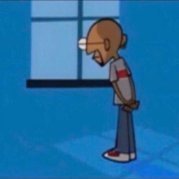




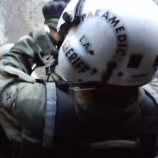
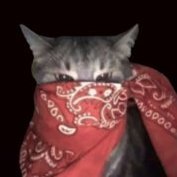
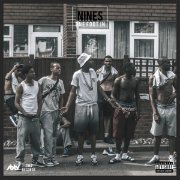


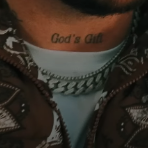

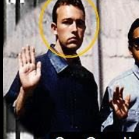


.thumb.jpg.172e6603433bac84740226a0db1b4c63.jpg)








